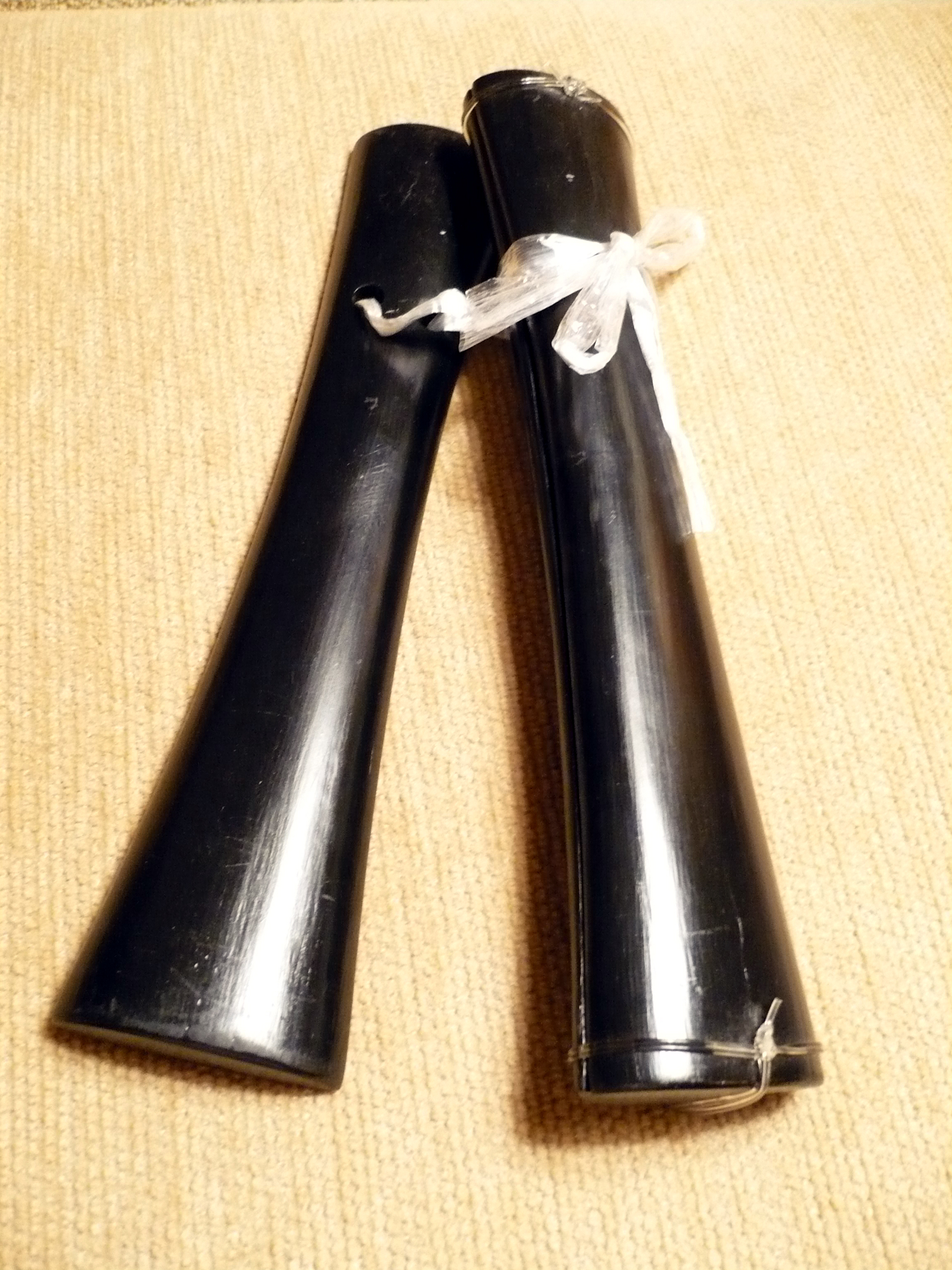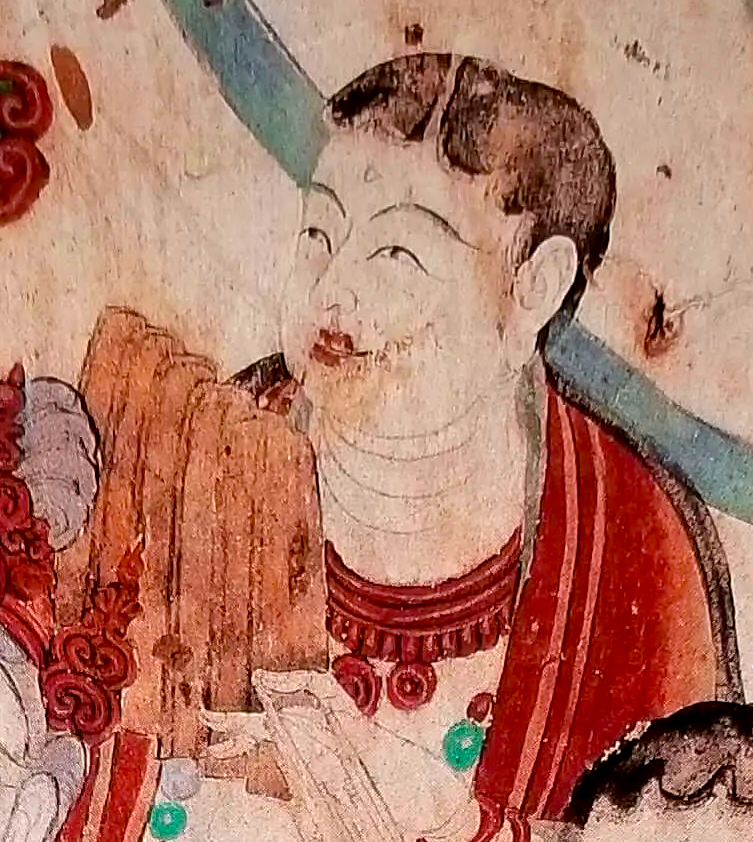|
Lan Caihe
Lan Caihe ()"Lan Caihe." ''Encyclopedia Britannica.'' https://www.britannica.com/topic/Lan-CaiheDorothy Perkins. ''Encyclopedia of China: History and Culture.'' Page 140. is a Chinese mythological figure, and one of the Eight Immortals in the Taoist pantheon. Presence in the Eight makes this figure one of the more familiar out of hundreds of other Taoist immortals. Lan Caihe is the only one of the Eight Immortals whose gender is ambiguous. Lan isn't generally thought to be based on a historical person, but is traditionally said to have been born sometime during the Tang dynasty (618 to 907 CE), and lived as a homeless street entertainer, who wandered all over China, singing philosophical songs. Stories vary about how Lan attained immortality and became one of the Eight Immortals. Lan's emblem is a basket of flowers, and so this immortal is considered the patron of florists and gardeners. Name and epithets According to the ''Hsiu hsiang Pa Hsien tung yu chi,'' epithets of ... [...More Info...] [...Related Items...] OR: [Wikipedia] [Google] [Baidu] |
Lan (surname 蓝)
Lan is the Mandarin pinyin and Wade–Giles romanization of the Chinese surname written in simplified Chinese and in traditional Chinese. It is romanized Lam or Nam in Cantonese. Lan is listed 131st in the Song dynasty classic text ''Hundred Family Surnames''. , it was the 121st most common surname in China, shared by 1.4 million people. Notable people surnamed Lan in English contexts This is a Chinese name, meaning the surname is stated the given name, though Chinese persons living in Western countries will often put their surname after their given name. Lan (Mandarin and Wu Chinese form): * Lan Bozhou (:zh:藍博洲, 藍博洲; born 1960), Taiwanese writer * Lan Caihe (藍采和), one of the Eight Immortals * Lan Chaoding ( 藍朝鼎; died 1861), Qing dynasty rebel leader * Lan Chaozhu ( 藍朝柱; 1826–1864), Qing dynasty rebel leader, brother of Lan Chaoding * Lan Cheng-lung (藍正龍; born 1979), Taiwanese actor * Lan Chengchun ( 藍成春; died 1864), Taiping Rebel ... [...More Info...] [...Related Items...] OR: [Wikipedia] [Google] [Baidu] |
He Xiangu
He Xiangu, birth name He Qiong, is a Chinese mythology, Chinese mythological figure and one of the Eight Immortals in the Taoism, Taoist pantheon. She is often seen as the only female among the Eight Immortals (though the sex of Lan Caihe, another of the Eight Immortals, is somewhat ambiguous). He Xiangu is believed to have lived in the Tang dynasty and was born in either Lingling District, Yongzhou, Hunan or Zengcheng District, Guangzhou, Guangdong. Legend According to the ''Xian Fo Qi Zong'' (), He Xiangu was the daughter of He Tai (), a man from Zengcheng District, Zengcheng, Guangdong. At birth, she had six long hairs on the crown of her head. When she was about 14 or 15, a divine personage appeared to her in a dream and instructed her to eat powdered mica so that her body might become etherealised and immune from death. She did as instructed, vowed to remain a virgin, and Bigu (grain avoidance), gradually decreased her food intake. Wu Zetian once sent a messenger to summon He ... [...More Info...] [...Related Items...] OR: [Wikipedia] [Google] [Baidu] |
Zhang Guolao
Zhang Guo, better known as Zhang Guolao, is a Chinese mythology, Chinese mythological figure and one of the Eight Immortals in the Taoism, Taoist pantheon. Among the Eight Immortals, Zhang Guolao, Zhongli Quan and Lü Dongbin, Lü Yan were real historical figures. His existence is said to have begun around the middle or end of the 7th century, and ended approximately in the middle of the 8th. The epithet "Lao" added at the end of his name means "old". Life Zhang was a Taoist ''fangshi'' (translated as "occultist-alchemist") who lived as a hermit on Zhongtiao Mountain (; southeast of present-day Yongji, Shanxi, Yongji, Shanxi) in Hengzhou () during the Tang dynasty. By the time Wu Zetian came to power, he claimed to be several hundred years old. A strong believer in the magic of necromancy, he also declared that he was a Grand Minister to the mythical Emperor Yao in his Reincarnation, previous life. Zhang also had a love for wine and winemaking. He was known to make liquor from ... [...More Info...] [...Related Items...] OR: [Wikipedia] [Google] [Baidu] |
Cao Guojiu
Cao Guojiu, literally Imperial Brother-in-law Cao, is a Chinese mythological figure and one of the Eight Immortals in the Taoist pantheon. His real name was Cao Yi while his courtesy name was Jingxiu, and he was better known to his contemporaries as Cao Jingxiu. Cao Guojiu is believed to be a descendant of Cao Bin, a general of the early Song dynasty, and a younger brother of Empress Cao, the wife of Emperor Renzong of the Song dynasty. As none of Emperor Renzong's sons survived their father, the emperor designated a younger male relative, who later became Emperor Yingzong, as his successor. As such, Cao could not have been a maternal uncle of Emperor Yingzong, so his "Imperial Uncle" status seemed ambiguous. However, as the Chinese character ''jiu'' (), which means "maternal uncle", can also mean "wife's brother", it is believed that the latter meaning should apply to Cao. In other words, Cao was the "Imperial Brother-in-Law" of Emperor Renzong rather than an "Imperial (Materna ... [...More Info...] [...Related Items...] OR: [Wikipedia] [Google] [Baidu] |
Chi (unit)
The chi (Tongyong Pinyin chih) is a traditional Chinese unit of length. Although it is often translated as the "", its length was originally derived from the distance measured by a human hand, from the tip of the thumb to the tip of the forefinger, and is similar to the ancient span. It first appeared during China's Shang dynasty approximately 3,000 years ago and has since been adopted by other East Asian cultures such as Japan (''shaku''), Korea (''ja/cheok''), and Vietnam (''thước''). Its present value is standardized at around , although the exact standards vary among the mainland of the People's Republic of China, its special administrative region of Hong Kong, and Taiwan. In its ancient and modern forms, the chi is divided into 10 smaller units known as cun (the "Chinese inch"). 10 chi are equal to 1 zhàng. Modern values In the People's Republic of China, ''chi'' has been defined since 1984 as exactly 1/3 of a metre, i.e., . However, in the Hong Kong SAR the corre ... [...More Info...] [...Related Items...] OR: [Wikipedia] [Google] [Baidu] |
Jade
Jade is a mineral used as jewellery or for ornaments. It is typically green, although may be yellow or white. Jade can refer to either of two different silicate minerals: nephrite (a silicate of calcium and magnesium in the amphibole group of minerals), or jadeite (a silicate of sodium and aluminium in the pyroxene group of minerals). Jade is well known for its ornamental use in East Asian, South Asian, and Southeast Asian art. It is commonly used in Latin America, such as Mexico and Guatemala. The use of jade in Mesoamerica for symbolic and ideological ritual was influenced by its rarity and value among pre-Columbian Mesoamerican cultures, such as the Olmecs, the Maya, and other ancient civilizations of the Valley of Mexico. Etymology The English word ''jade'' is derived (via French and Latin 'flanks, kidney area') from the Spanish term (first recorded in 1565) or 'loin stone', from its reputed efficacy in curing ailments of the loins and kidneys. ''Nephrite'' is der ... [...More Info...] [...Related Items...] OR: [Wikipedia] [Google] [Baidu] |
Paiban
The ''paiban'' () is a clapper made from several flat pieces of hardwood or bamboo (or, formerly, sometimes also ivory or metal), which is used in many different forms of Chinese music. There are many different types of ''paiban'', and the instrument is also referred to as ''bǎn'' (板), ''tánbǎn'' (檀板, literally "sandalwood clapper"), ''mùbǎn'' (木板, literally "wooden clapper"), or ''shūbǎn'' (书板). Typical materials used for the ''paiban'' include ''zitan'' ( 紫檀, rosewood or red sandalwood), ''hongmu'' ( 红木), or ''hualimu'' ( 花梨木, rosewood), or bamboo, with the slats tied together loosely on one end with cord. It is held vertically by one hand and clapped together, producing a sharp clacking sound. When used together with a small drum (both played together by a single player, the ''paiban'' held in one hand and the drum played with a stick held in the other) the two instruments are referred to collectively as ''guban'' ( 鼓板). Somewhat confusin ... [...More Info...] [...Related Items...] OR: [Wikipedia] [Google] [Baidu] |
Castanets
Castanets, also known as ''clackers'' or ''palillos'', are a percussion instrument (idiophone), used in Spanish, Kalo, Moorish, Ottoman, Italian, Sephardic, Swiss, and Portuguese music. In ancient Greece and ancient Rome there was a similar instrument called the crotalum. The instrument consists of a pair of concave shells joined on one edge by a string. They are held in the hand and used to produce clicks for rhythmic accents or a ripping or rattling sound consisting of a rapid series of clicks. They are traditionally made of hardwood (chestnut; Spanish: castaño), although fibreglass has become increasingly popular. In practice, a player usually uses two pairs of castanets. One pair is held in each hand, with the string hooked over the thumb and the castanets resting on the palm with the fingers bent over to support the other side. Each pair will make a sound of a slightly different pitch. The origins of the instrument are not known. The practice of clicking hand-held sti ... [...More Info...] [...Related Items...] OR: [Wikipedia] [Google] [Baidu] |
Clapper (musical Instrument)
A clapper is a basic form of percussion instrument. It consists of two long solid pieces that are struck together producing sound. A straightforward instrument to produce and play, they exist in many forms in many different cultures around the world. Clappers can take a number of forms and be made of a wide variety of material. Wood is most common, but metal and ivory have also been used. The plastic thundersticks that have recently come to be popular at sporting events can be considered a form of inflated plastic clapper. Several specific forms of clapper have their own names, such as the Chinese ''guban'', Japanese '' hyoshigi'', or the Korean '' bak''. In the classical music of Thailand, a similar instrument is called ''krap''. In India cooking tongs or चिमटा itself is often used to provide rhythm while singing religious hymns in many cultures (sometimes tongs made specifically for the purpose are also equipped with bell In Vietnam, the coin clapper called '' Sên ... [...More Info...] [...Related Items...] OR: [Wikipedia] [Google] [Baidu] |
Musical Instrument
A musical instrument is a device created or adapted to make musical sounds. In principle, any object that produces sound can be considered a musical instrument—it is through purpose that the object becomes a musical instrument. A person who plays a musical instrument is known as an instrumentalist. The history of musical instruments dates to the beginnings of human culture. Early musical instruments may have been used for rituals, such as a horn to signal success on the hunt, or a drum in a religious ceremony. Cultures eventually developed composition and performance of melodies for entertainment. Musical instruments evolved in step with changing applications and technologies. The date and origin of the first device considered a musical instrument is disputed. The oldest object that some scholars refer to as a musical instrument, a simple flute, dates back as far as 50,000 - 60,000 years. Some consensus dates early flutes to about 40,000 years ago. However, most historians be ... [...More Info...] [...Related Items...] OR: [Wikipedia] [Google] [Baidu] |






